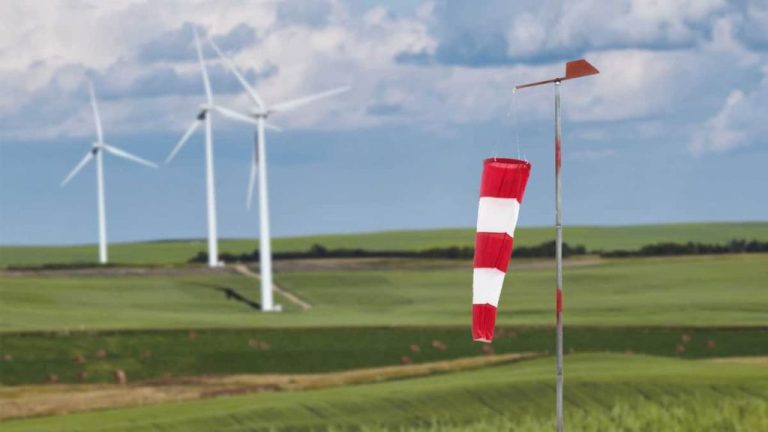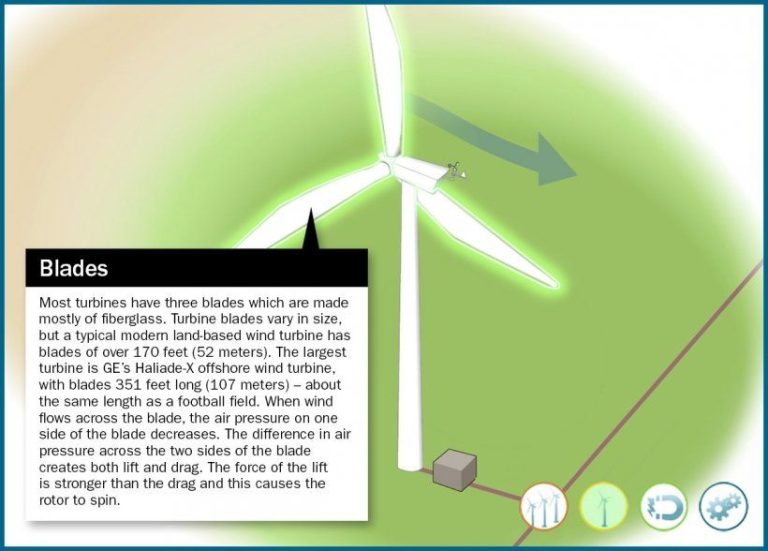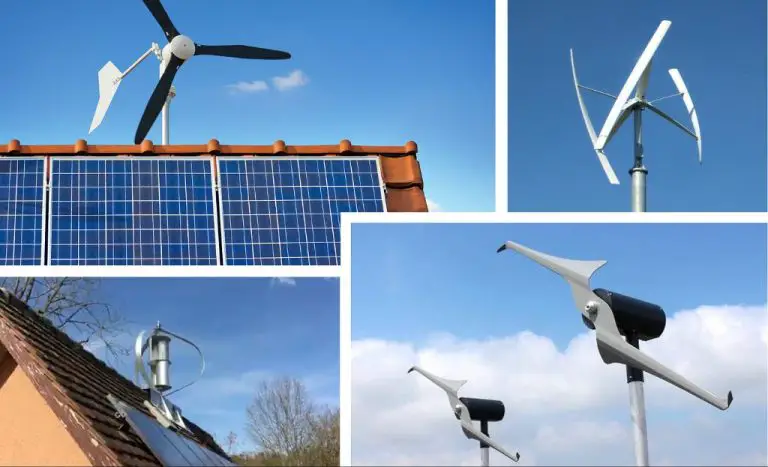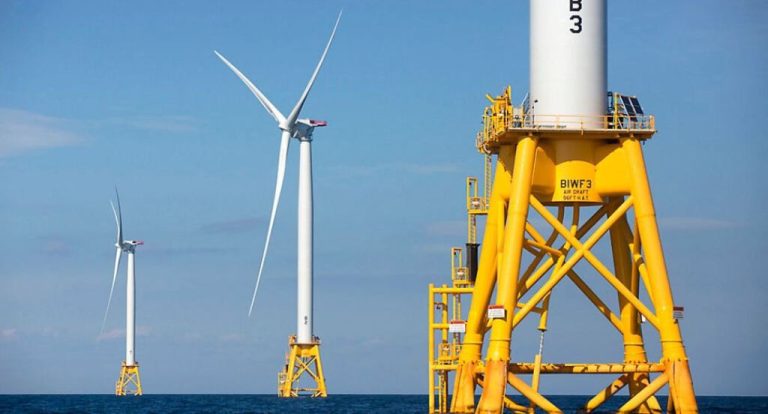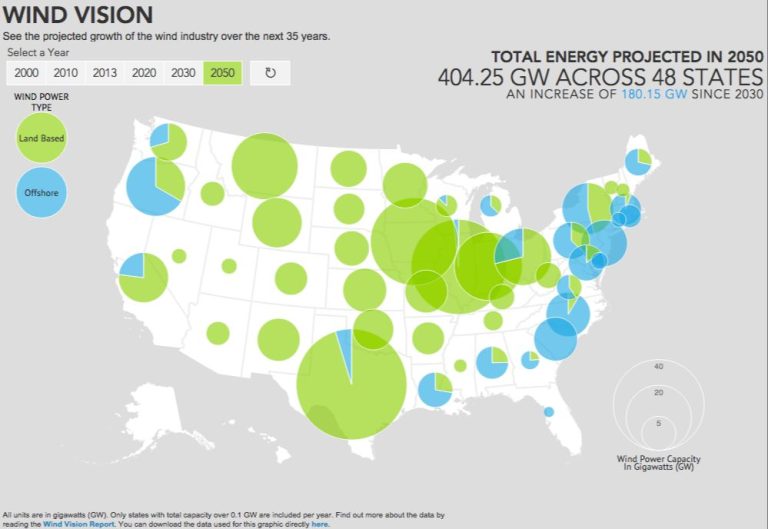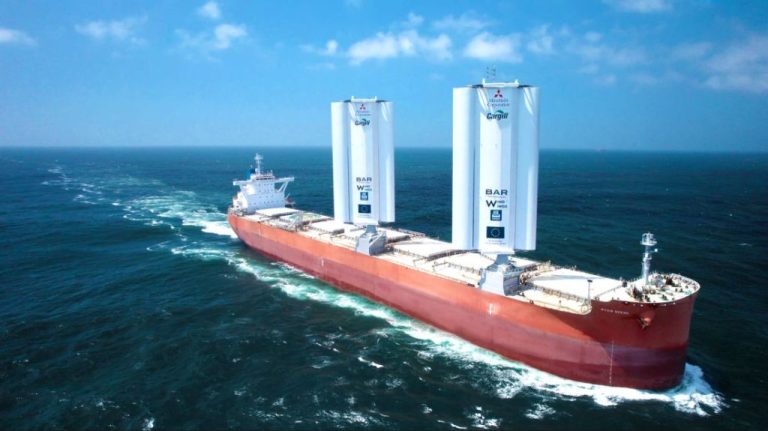What Is The Biggest Downside To Wind Power?
Intermittency
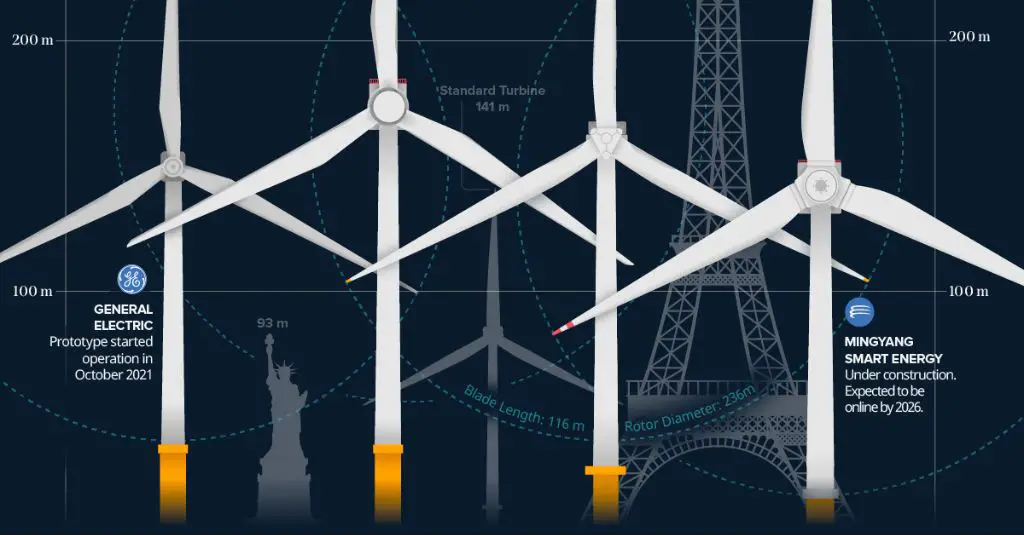
Wind power is intermittent and variable, as the output depends on weather conditions. Wind turbines only generate electricity when the wind is blowing within an optimal speed range. There are natural variations in wind speed on hourly, daily, and seasonal timescales that affect the stability of power generation (1).
This intermittency means wind power cannot provide steady baseload power like fossil fuels or nuclear. There are times when wind speeds are too low to generate any electricity at all. To compensate, backup power sources or storage are required to fill gaps when the wind isn’t blowing enough (2).
High Upfront Costs
Wind power requires significant upfront capital investment for purchasing and installing wind turbines and related infrastructure. According to Windustry.org, the costs for building a utility-scale wind turbine range from $1.3 million to $2.2 million per megawatt (MW) of electricity production capacity [1]. Small wind turbines for residential use cost $3,000 to $5,000 per kilowatt of capacity, according to Energysage.com [2]. This high initial investment means wind power can have a longer payback period compared to fossil fuel power plants.
The major components that contribute to the upfront costs include the wind turbine itself, tower and foundation construction, land acquisition, road construction, grid connections, and financing costs. Once installed, wind turbines have relatively low maintenance and operational costs.
While wind power requires high initial capital, costs have declined substantially in recent decades as technology has improved. The levelized cost of wind energy is now competitive with fossil fuels in many markets. However, the high upfront investment remains a downside and barrier to widespread adoption, especially in developing countries.
Land Use
Wind farms require large areas of land due to spacing needed between turbines. According to research from the National Renewable Energy Laboratory, the total land area required for a wind power plant consists of the perimeter surrounding all turbines in the project, which can range from 2 to 40 acres per megawatt of capacity depending on various factors (NREL, 2009). One industry source estimates each turbine requires around 80 acres of land (LandGate, 2024). This is because turbines need to be spaced apart for optimal wind flow and efficiency.
The large land footprint of wind farms can be seen as visually unappealing and disruptive to natural landscapes by some people. The turbines, access roads, and other infrastructure can change the look and feel of rural areas. However, others believe the visual impacts are manageable or worthwhile given the benefits of clean energy production. Proper siting, setbacks from residences, screening, and other mitigation strategies can help minimize visual disturbances. Overall, determining acceptable land use for wind power involves carefully weighing factors such as energy needs, economic benefits, and local concerns.
Noise Pollution
Wind turbines can produce noise pollution for people living nearby. This is caused by two main types of noise:
- Mechanical noise from the turbine components like the gearbox and generator (How Loud Is A Wind Turbine?)
- Aerodynamic noise from the blades moving through the air (Wind Turbine Sound – WINDExchange – Department of Energy)
On average, wind turbines produce sound levels around 45 decibels when measured from 300 meters away. This is comparable to a library’s ambient noise. The noise is generally not noticeable over the background noise in typical environments (FACTS ABOUT WIND ENERGY AND NOISE).
However, the swooshing or thumping sounds can be annoying for some people living very close to wind farms. Proper siting of turbines is important to reduce noise impacts on nearby homes.
Threat to Wildlife
Wind turbines can pose a risk to birds and bats due to collisions, especially for migratory species. Studies have found that wind energy facilities kill birds and bats, with mortality rates varying across regions and facilities. The spinning blades can directly strike flying animals, leading to death or serious injury.
Birds of prey, migratory songbirds, and threatened or endangered species like the Indiana bat are especially vulnerable. One major concern is that wind farms located along migratory flyways and nesting areas could significantly affect populations over time. Conservation groups recommend careful site selection and impact monitoring to help protect wildlife.
In addition to direct collisions, wind turbines may disrupt or fragment sensitive habitats during construction. The noise, vibration, and human activity can temporarily displace species like greater sage-grouse from their native environment. Proper planning and siting of turbines and associated infrastructure can help minimize the habitat impacts.
Transmission Challenges
One of the biggest challenges facing wind power is transmitting the electricity from wind farms to cities and towns where the power is needed. Many of the best locations for wind farms, like plains and remote mountain ridges, are far from major population centers. For example, some of the most productive wind resources are in the Great Plains region, while large cities like Chicago, Dallas and Atlanta are hundreds of miles away.
Transporting wind-generated electricity over long distances requires expanding transmission infrastructure, including new high-voltage transmission lines and towers (Wind Energy Transmission of Texas). Constructing new transmission lines to connect wind farms to the grid can be costly and time consuming, often requiring crossing multiple states and various landowners’ properties. Upgrading the U.S. transmission system to support growth in wind power is expected to cost billions of dollars over the next decade (How Do Distributed Wind Energy Systems Work?).
Transmission congestion can also hinder the growth of wind power. In some cases, existing transmission capacity is insufficient to deliver power from remote wind farms to distant cities. Until larger transmission upgrades can be completed, congestion issues can force some wind farms to periodically curtail their generation. Building new transmission lines is key to enabling wind power to access more electricity markets.
Local Opposition
One of the biggest obstacles facing new wind power projects is local opposition from community members. According to a 2023 study published in PNAS, wind projects experiencing opposition were located in areas with larger percentages of White people, and lower percentages of Black and Hispanic/Latino people (https://www.pnas.org/doi/10.1073/pnas.2302313120). Residents may oppose wind farms over concerns about noise, viewshed obstructions, and negative impacts to wildlife and property values.
Permitting and siting wind farms can also be a lengthy process due to zoning laws, environmental regulations, and the need to assess wind resources and transmission capacity. Developers must conduct studies, hold public hearings, and negotiate with landowners. This complex process allows more time for local opposition groups to mobilize. Though support for wind power is generally high, overcoming resistance from even a small number of vocal community members can stall or derail proposed projects.
Unsuitable Locations
Wind power is only effective in locations with consistently strong winds. The capacity factor, which measures a wind turbine’s actual productivity as a percentage of its maximum potential, varies greatly by region across the United States. According to the U.S. Energy Information Administration, capacity factors range from 20-30% in the Southeast up to 45-50% in the central plains states like Texas and Oklahoma. Regions with lower average wind speeds are generally unsuitable for utility-scale wind power.
Offshore wind farms can access steadier winds, but they come at much higher costs for construction and grid connection. According to the U.S. Department of Energy, average capacity factors for offshore projects range from 39-48%, compared to 32-44% for land-based wind.
Aesthetic Impacts
Some find wind turbines visually unappealing, spoiling natural landscapes. This is a subjective issue open to debate. While wind turbines can be seen as modern marvels harnessing natural wind energy, others feel they clutter scenic vistas. As the Changing Landscape notes, “the visual impact of wind turbines has sparked debates across communities.” Concerns often focus on how wind farms affect the aesthetics and natural beauty of landscapes.
On the other hand, some argue wind turbines have their own graceful aesthetic. As this piece points out, “wind turbines are works of functional art” representing sustainable technology. Their aesthetic value derives partially from their purpose and what they represent. Still, perceptions vary based on subjective taste and context. The debate remains open on whether the aesthetic impacts of wind turbines enhance or detract from natural scenery.
Summary
Based on the analysis above, the two biggest downsides to wind power are intermittency and high upfront costs. Intermittency refers to the fact that wind power production depends on the wind blowing, which can fluctuate throughout the day and vary by season and location. This requires backup power sources like natural gas plants to fill in the gaps when wind dies down. High upfront costs include expenses for land, permitting, turbines, connection to transmission lines, and more, which generally make wind power more expensive than fossil fuels per kWh generated. This can burden ratepayers and deter investment.
However, while wind power has downsides, it still provides valuable environmental benefits over fossil fuel energy sources. Wind emits no air or water pollution, unlike coal, oil and natural gas. Expanding wind energy can help reduce greenhouse gas emissions and address climate change. With technological improvements and scaled manufacturing, the costs of wind power are coming down. And integrating it with storage, transmission, and other renewables can overcome intermittency issues. So while wind has drawbacks, it remains an important renewable energy source to utilize along with solar, geothermal, hydroelectric and other clean technologies.

